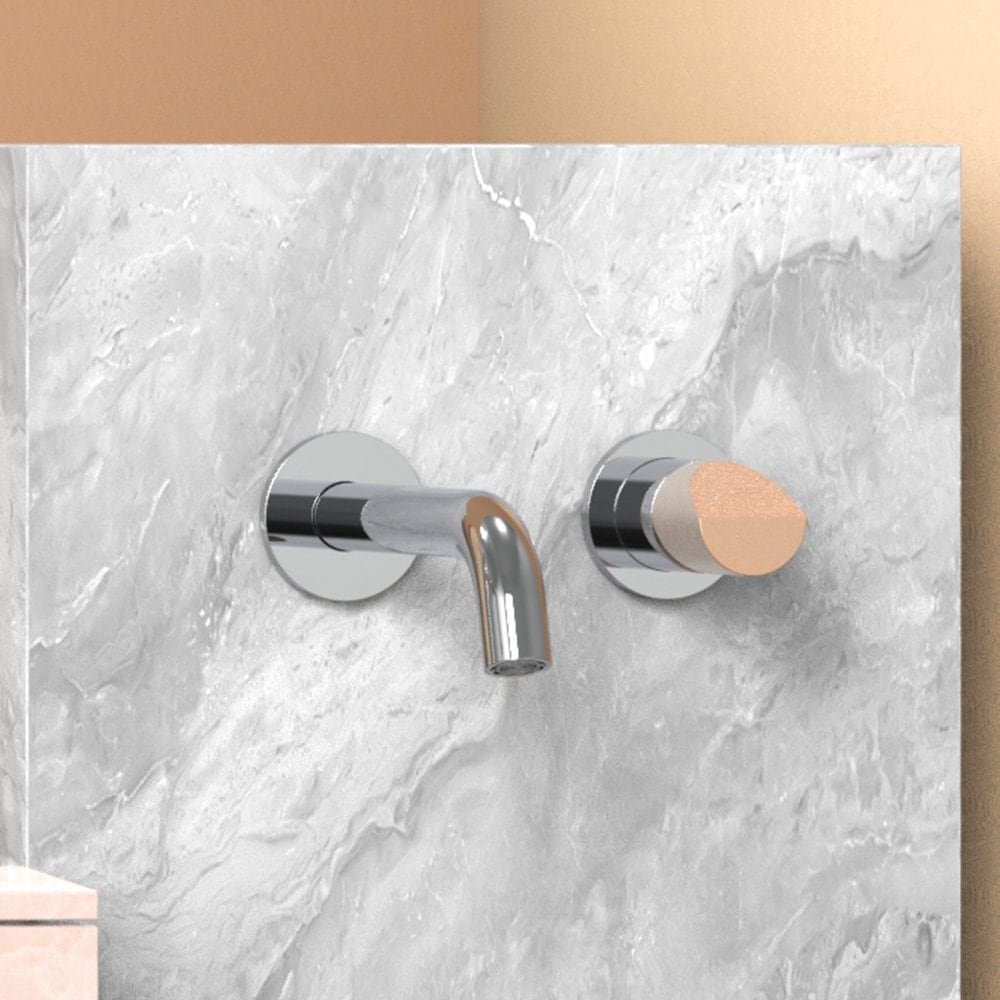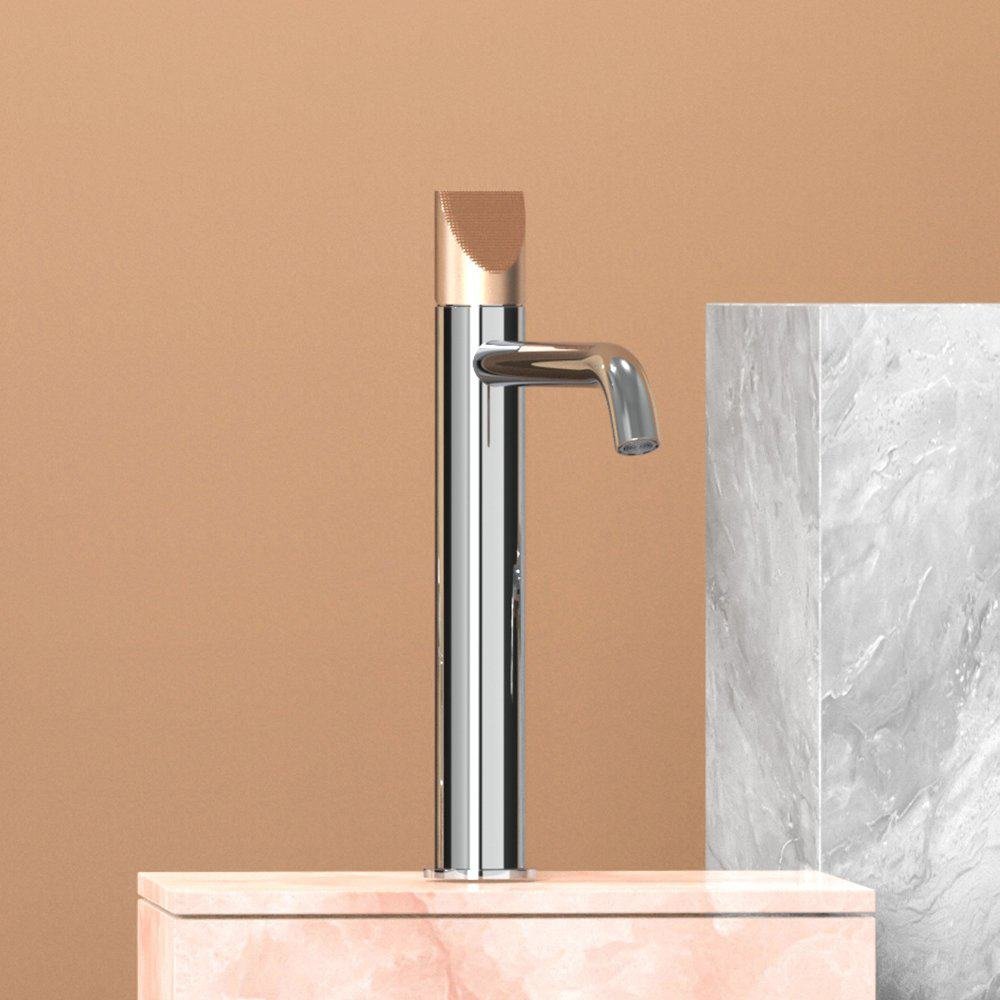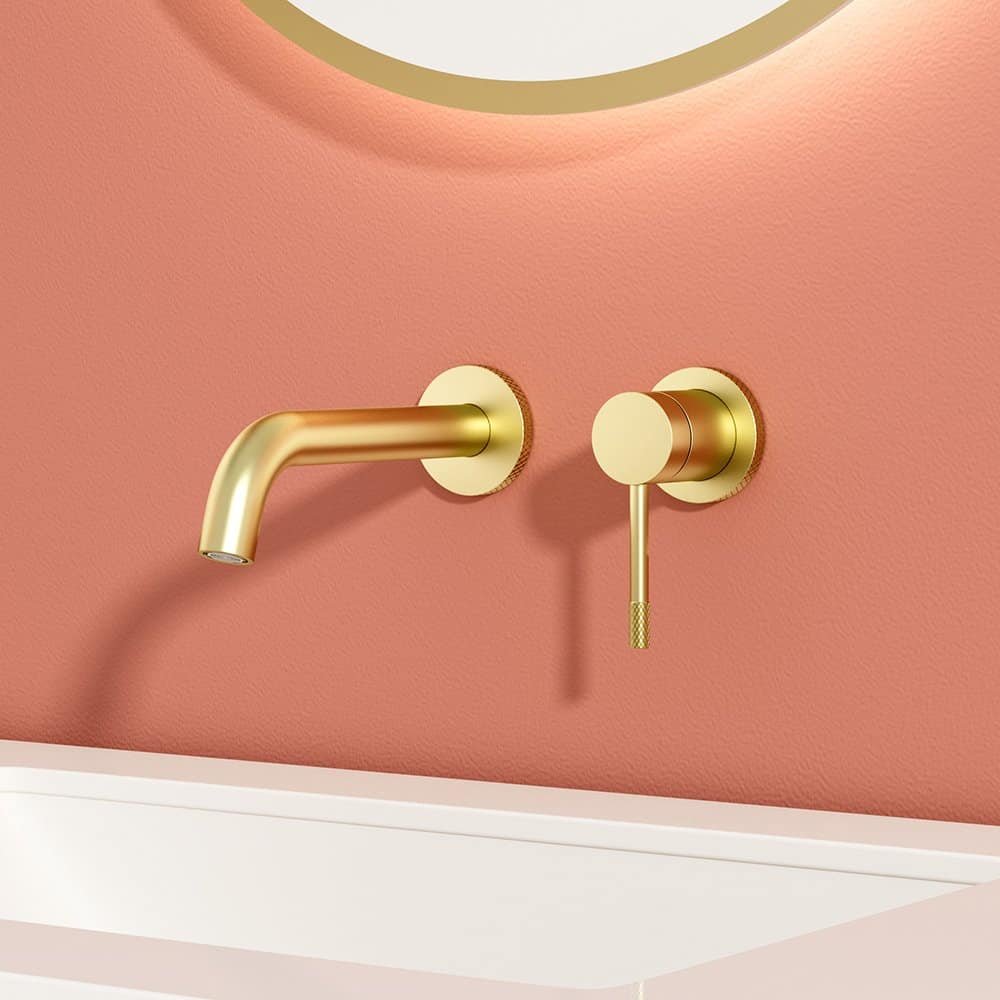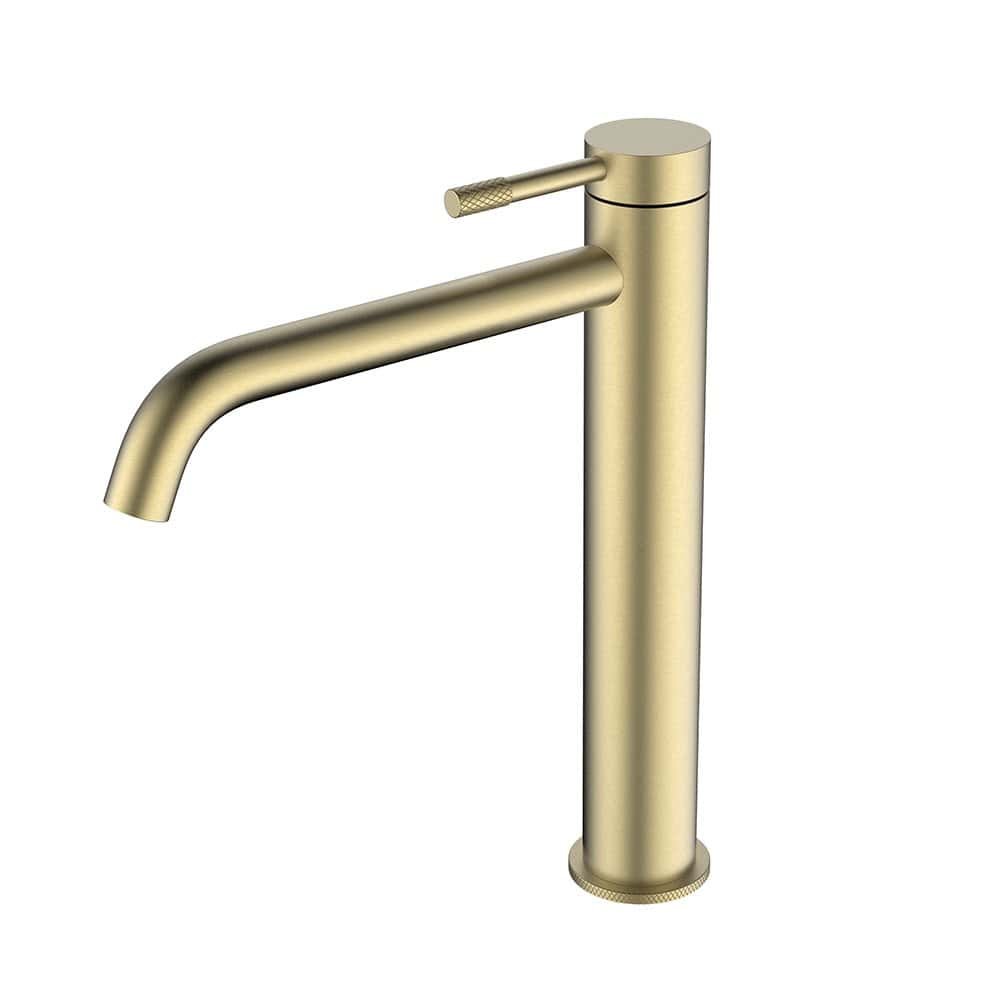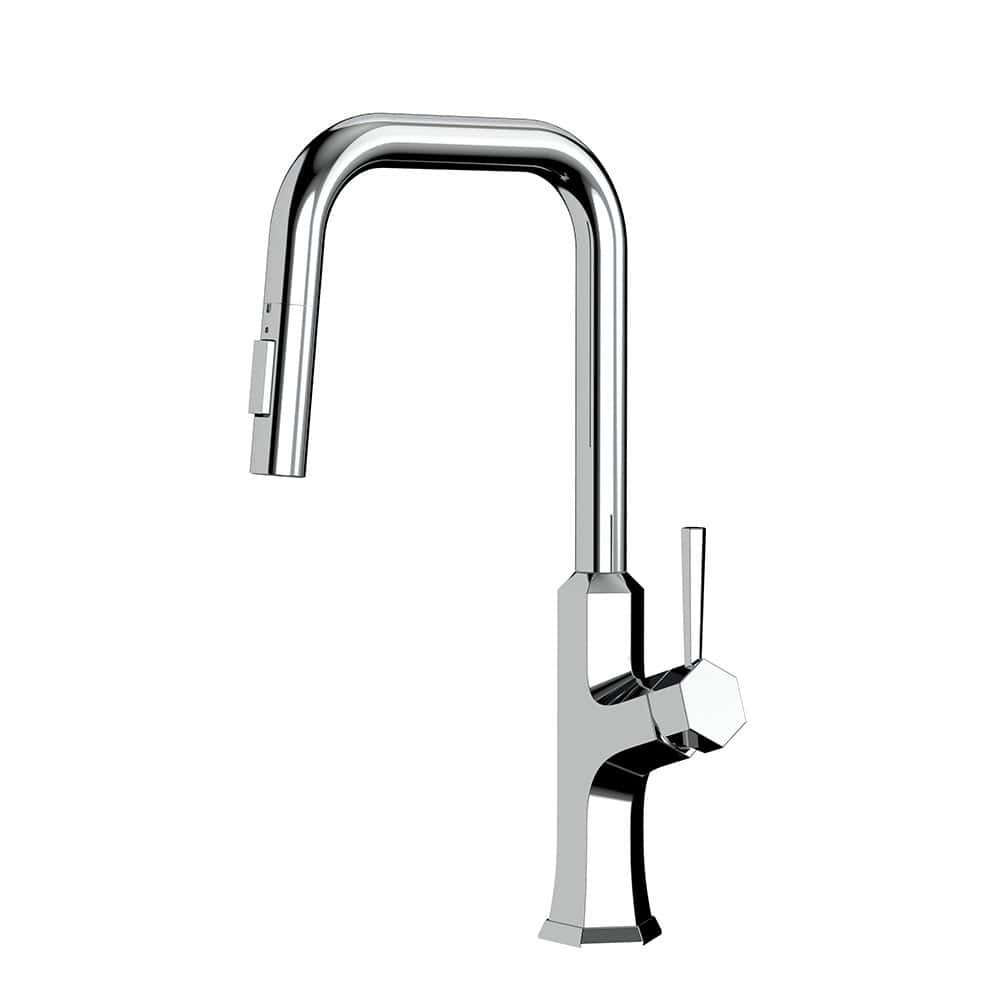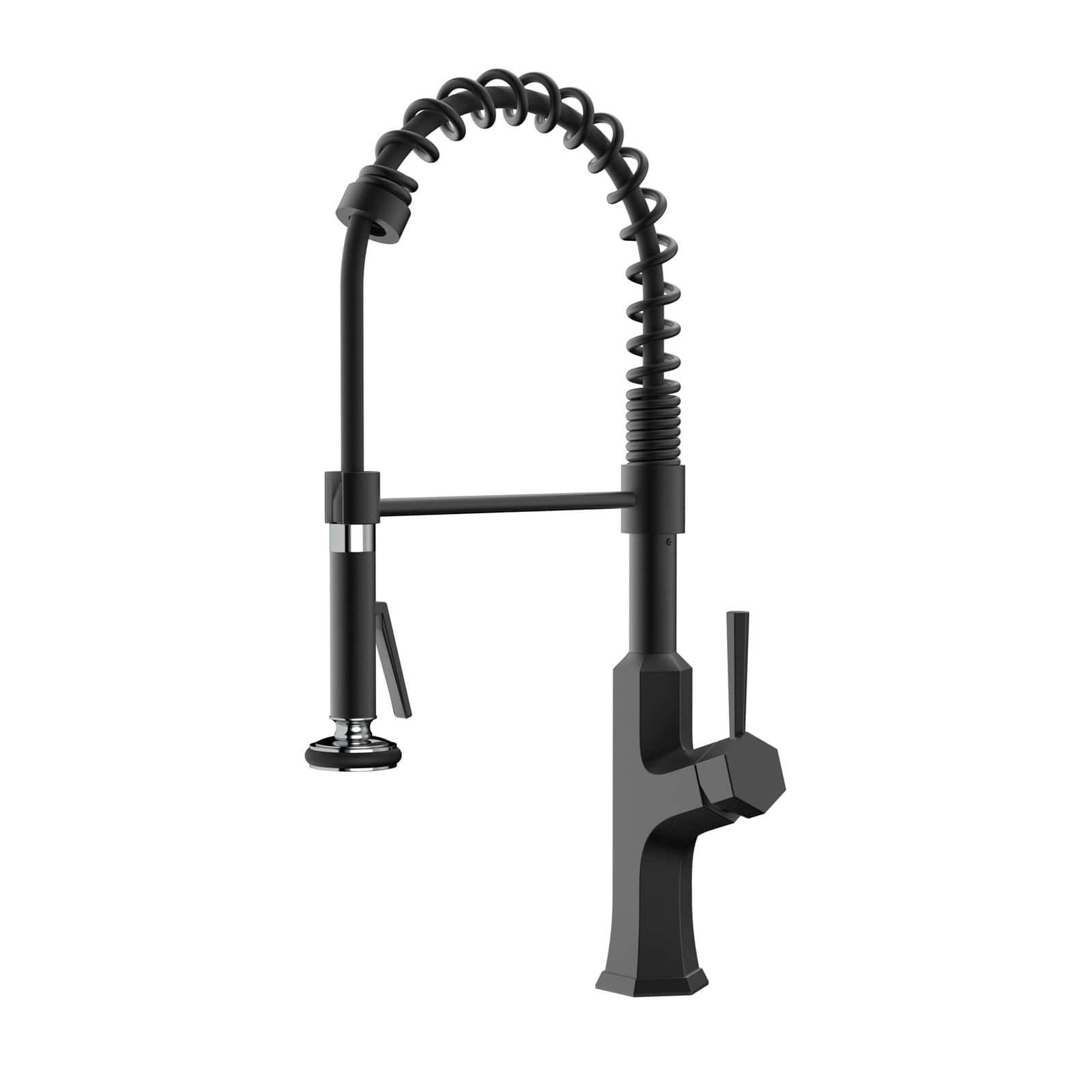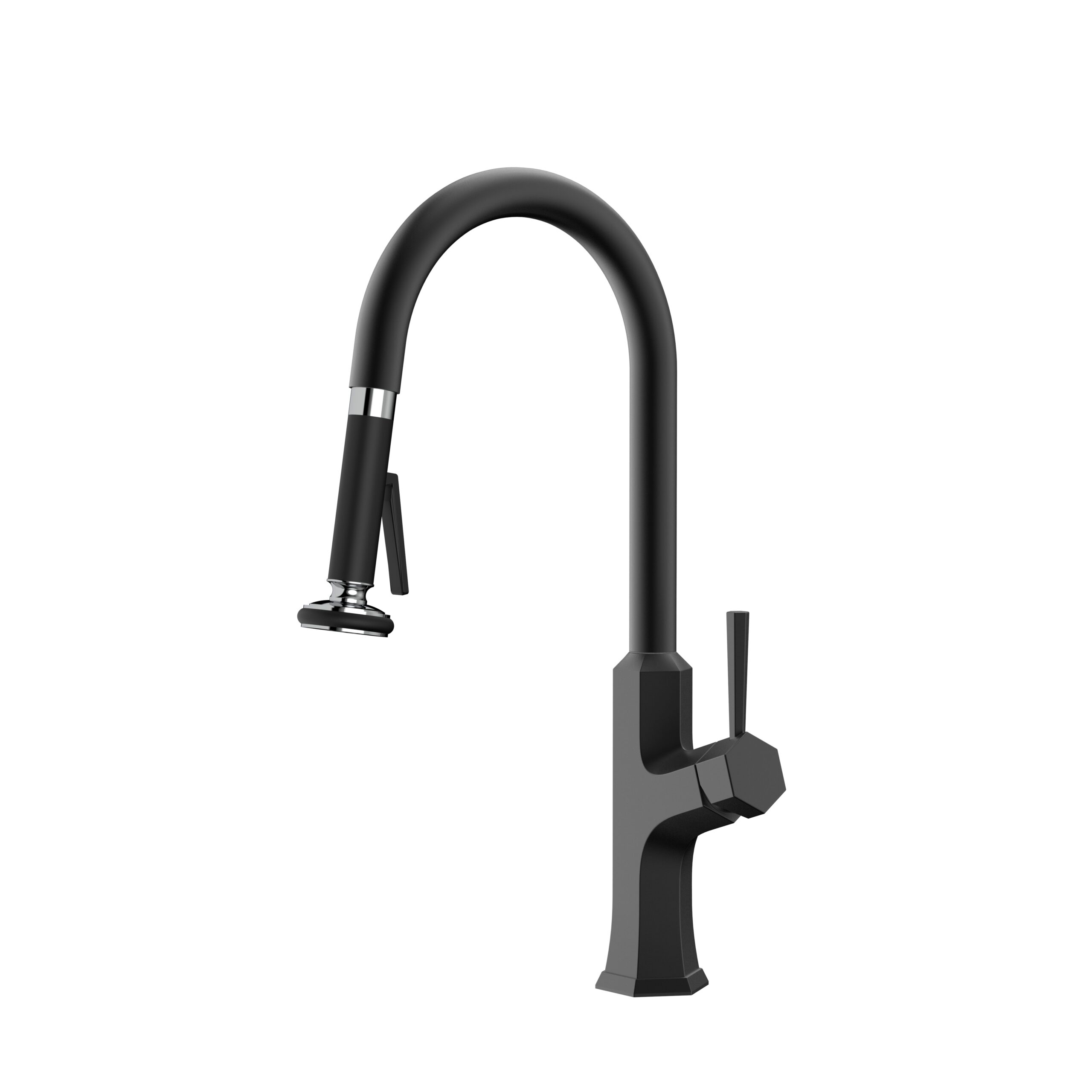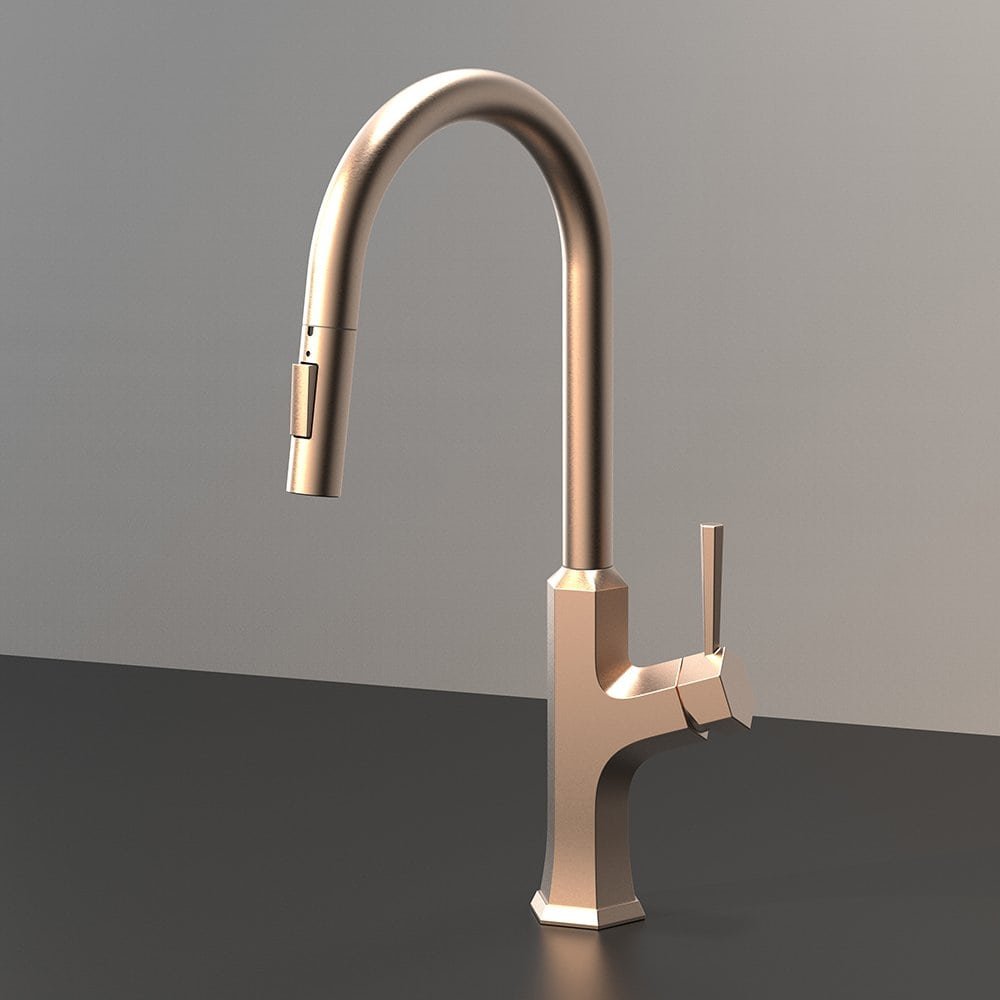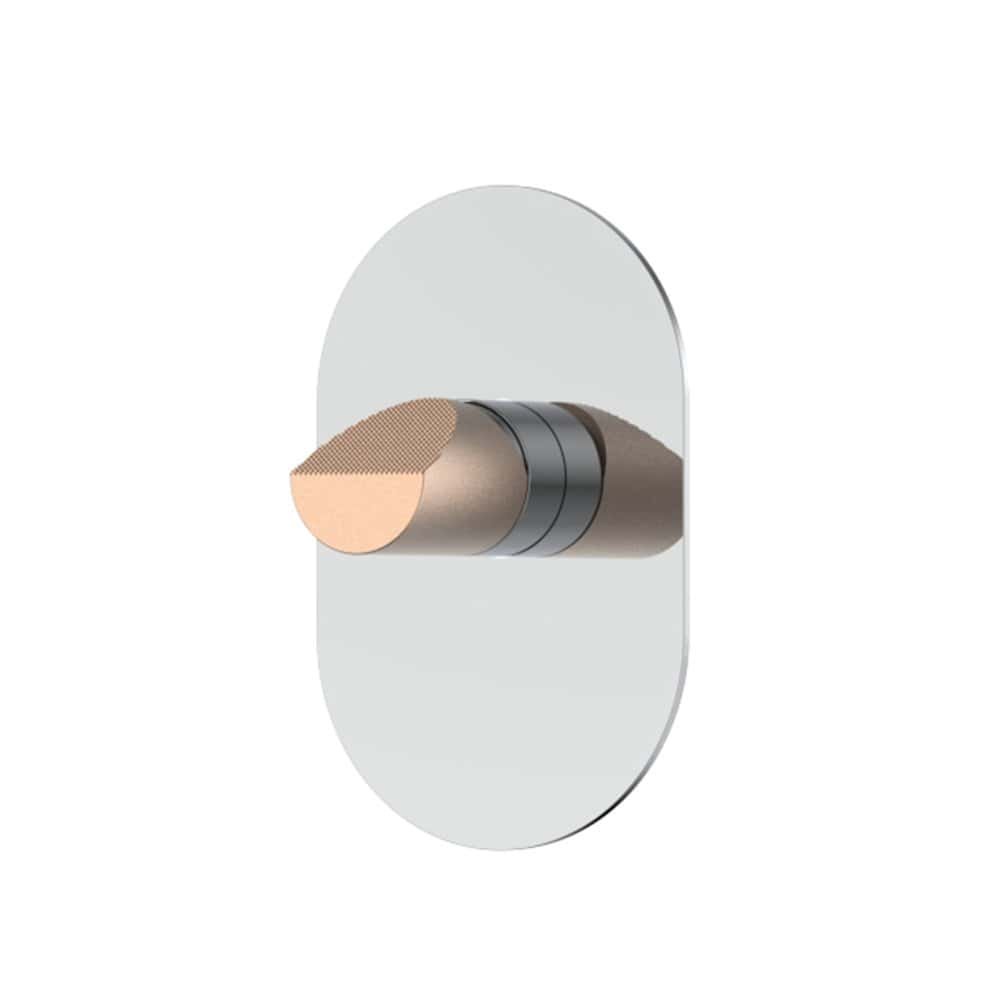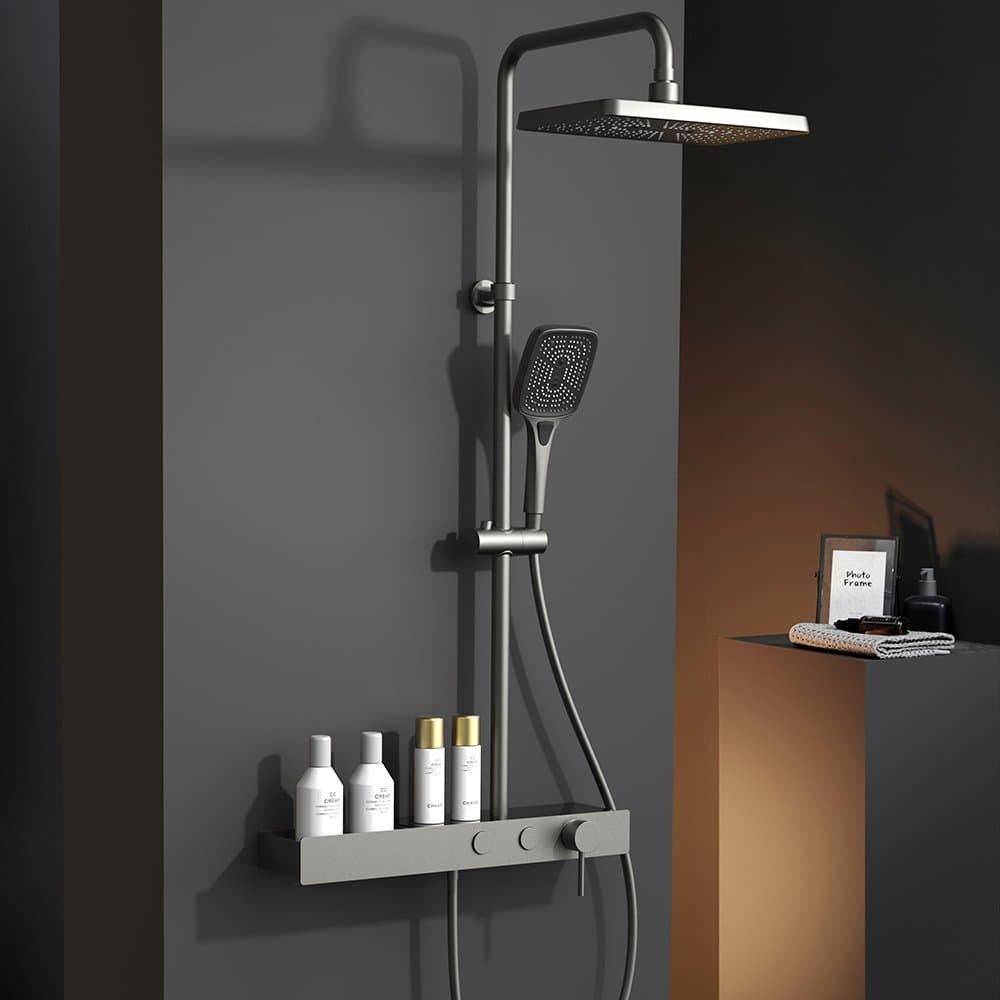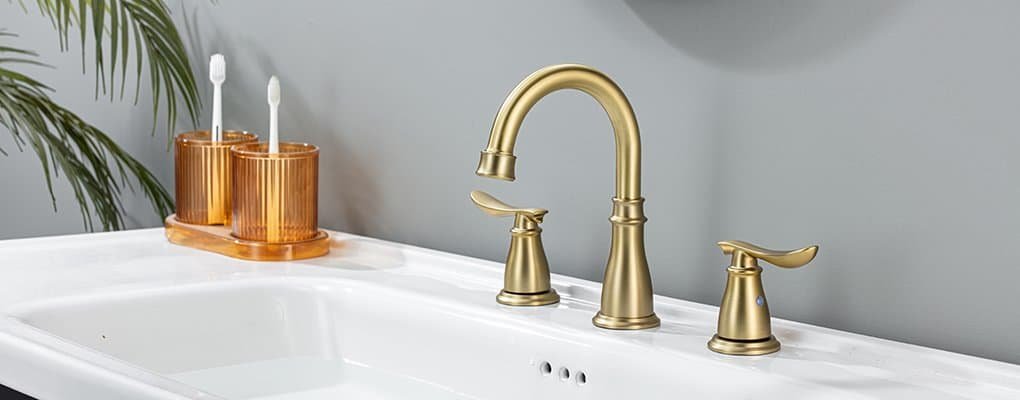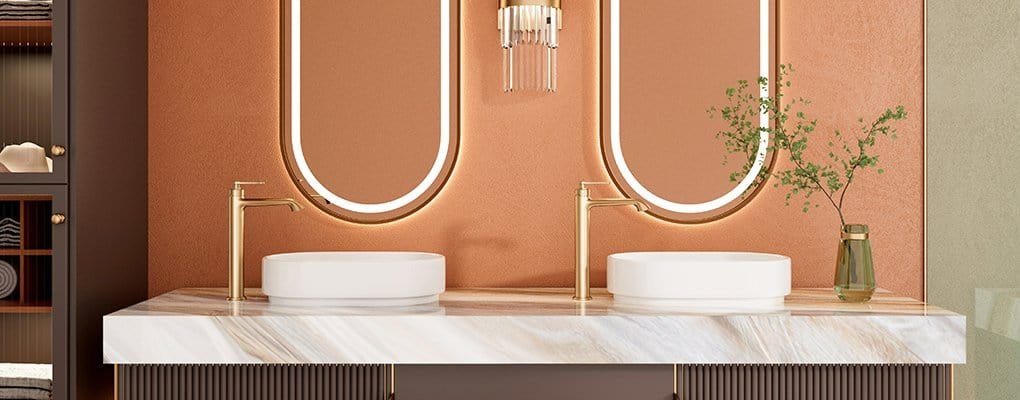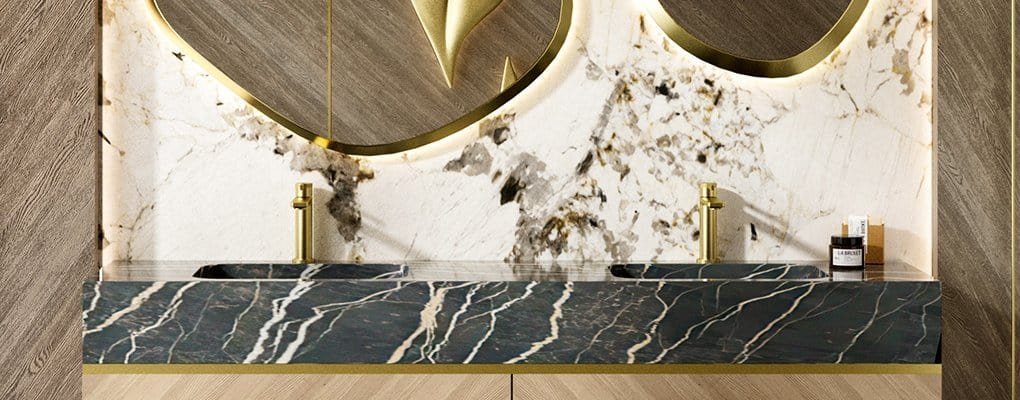Navigating faucet finishes can be overwhelming, right? You’re imagining the perfect look for your space, then run into terms like “stainless steel,” “brushed nickel,” and “chrome.” Many people assume “stainless steel” only means that classic silvery-gray finish—but that’s a common misconception.
In reality, stainless steel faucets can come in a wide range of finishes—from sleek matte black to brushed gold and even chrome. Stainless steel’s natural durability and corrosion resistance make it the perfect base for applying advanced finishing techniques that create these beautiful looks.
If you’re looking for a faucet that combines style and longevity, you’re in the right place. Let me walk you through how these finishes are made and how to choose the best one for your home.
Table of Content
- The Many Faces of “Stainless Steel” Finishes: How They Get Their Look
- How Faucet Colors Are Made: The Science Behind the Style
- Where Do These Finishes Live? Common Product Categories
- Taking Care of Your Faucet Finish: Beyond Basic Cleaning
- Installation, Compatibility & Design Integration: Making Your Faucet Fit
- The Environmental and Health Impact of Your Faucet Choice
- Making Your Decision: Which Finish is Right for You?
- FAQs
The Many Faces of “Stainless Steel” Finishes: How They Get Their Look
When you choose a “stainless steel” faucet, you’re usually looking at a specific visual style that’s achieved through different surface treatments. It’s not just one look! Let’s break down how these variations come to life.
Direct Treatments on Stainless Steel
These finishes are created by directly altering the surface of the stainless steel itself, either through mechanical processes like brushing and polishing, or by applying a specialized clear protective layer.
- Classic Stainless Steel:
- How it’s done: This is the most common “stainless steel” finish, achieved by mechanically brushing or abrading the surface of the stainless steel. Tiny, parallel lines are created, which scatter light and give it a subtle, muted, and satin-like appearance.
- Appearance: A warm, silvery-gray tone with a low sheen.
- Pros: Hides water spots and fingerprints relatively well, very durable, versatile for many styles.
- Cons: Can still show smudges with heavy use, not as bright as chrome.
- Best For: Modern, transitional, industrial, or farmhouse kitchens and bathrooms.
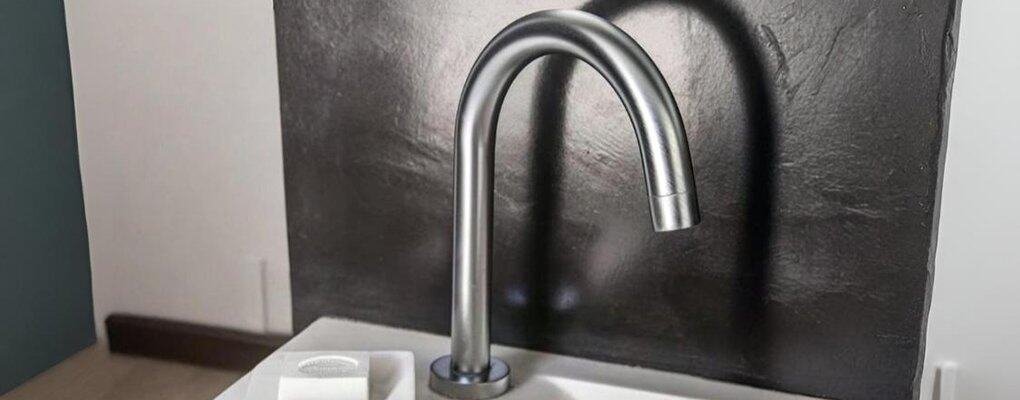
- Polished Stainless Steel:
- How it’s done: Unlike brushed stainless steel, this finish is created by buffing and polishing the stainless steel surface to a high shine. No intentional brushing marks are left.
- Appearance: A bright, mirror-like, and highly reflective surface, similar to chrome but with the inherent warmth of stainless steel.
- Pros: A sleek, contemporary feel. Inherently durable due to the solid stainless steel base.
- Cons: Shows fingerprints, water spots, and smudges very clearly, similar to chrome.
- Best For: Ultra-modern or minimalist designs where a high-gloss metallic look is desired.
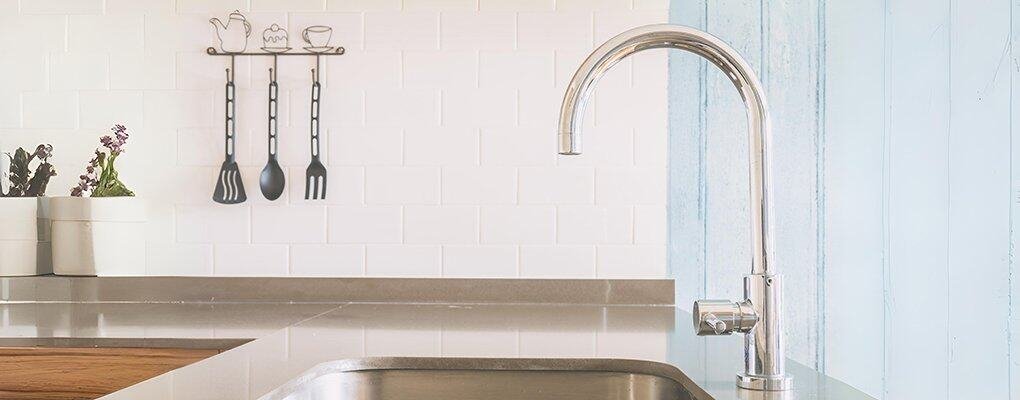
- Arctic Stainless / SpotShield Stainless (and similar proprietary finishes):
- How it’s done: These variations are typically achieved by applying a specialized, often nanotechnology-based, clear protective coating over an existing brushed stainless steel finish.
- Appearance: Similar to classic stainless steel but often with a slightly cooler, brighter tone.
- Pros: Engineered to be exceptionally resistant to water spots and fingerprints, maintaining a cleaner look with less effort.
- Cons: Often proprietary to specific brands, potentially limiting perfect matching across brands.
- Best For: High-traffic areas, homes with hard water, or those who prefer minimal cleaning.
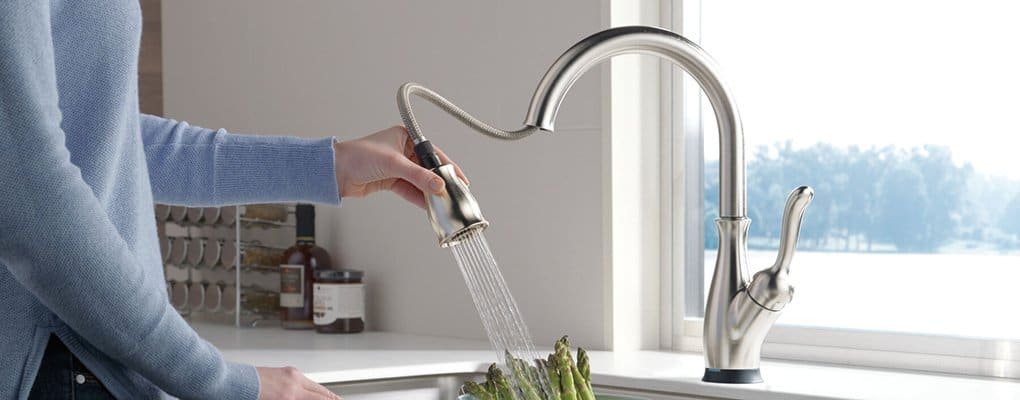
(via.Delta»)
Coloring Stainless Steel Surfaces
These finishes are achieved through techniques like Physical Vapor Deposition (PVD), where a thin layer of colored metal is bonded to the stainless steel surface. This process makes it possible to create many popular finishes—such as chrome, black, and more—while maintaining the strength and durability of stainless steel.
Next, let me walk you through some of the most sought-after faucet colors and what makes each one unique.
| Finish | Appearance | Pros | Cons | Best For |
|---|---|---|---|---|
| Chrome | Bright, mirror-like, cool silvery-blue tone | – Most affordable – Easy to clean – Versatile, timeless | – Shows water spots/fingerprints easily – Can scratch | Modern, contemporary, traditional, minimalist designs |
| Gunmetal | Deep, dark gray/charcoal, often with subtle sheen | – Sophisticated, modern look – Hides water spots/fingerprints – Often PVD for high durability | – Higher cost – Can be hard to perfectly match across brands | Industrial, urban, contemporary, minimalist designs |
| Matte Black | Deep, non-reflective black, velvety texture | – Bold, contemporary statement – Excellent at hiding water spots/fingerprints – Very versatile | – Shows light dust/soap residue – Higher cost – Scratches are visible | Modern, minimalist, industrial, Scandinavian, farmhouse |
| Brushed Gold | Muted, soft gold with brushed texture | – Luxurious, warm appeal – Hides fingerprints/smudges – Often PVD coated | – Premium price – Gold tones vary by brand (hard to match) | Modern luxury, art deco, mid-century modern, transitional |
| Rose Gold | Delicate blend of warm gold and subtle pink | – Unique, trendy, romantic – Adds warmth and elegance – Complements various palettes | – Can show water spots/fingerprints – Less commonly available | Contemporary, feminine, minimalist, eclectic designs |
| Bronze | Dark brown, reddish undertones, often aged look | – Classic, rustic, old-world charm – Hides water spots/fingerprints – Patina hides wear | – Can make small spaces feel darker – Look varies by brand | Traditional, Tuscan, Mediterranean, rustic, farmhouse |
How Faucet Colors Are Made: The Science Behind the Style
Have you ever wondered how those unique colors are added to the surface of stainless steel? It all comes down to three main techniques. Up next, I’ll walk you through each process and how it brings these stunning finishes to life.
Electroplating
Electroplating is a widely used technique where a thin layer of one metal is applied onto another using an electric current. It’s a versatile process that not only changes the visual appeal but also enhances the base metal’s physical properties, like wear resistance and corrosion protection.
- How it works:
- Preparation: First, manufacturers meticulously clean the faucet components to remove any dirt, grease, or oxides. This step is crucial for a high-quality finish.
- Immersion Layer: Often, they apply an immersion layer of a base material, like nickel, to improve adhesion and corrosion resistance.
- The Bath: The faucet then goes into an electroplating bath, which is a solution containing ions of the metal they want to plate with (e.g., gold ions for a gold finish).
- Current Application: An electric current runs through the solution, with the faucet as the negative cathode and the plating metal as the positive anode. The current dissolves the metal into ions, which then deposit onto the faucet, forming a thin metallic layer.
- Rinsing & Curing: After plating, the faucet is thoroughly rinsed to remove residues and then air-dried and quality-checked.
- Pros: Creates a smooth, uniform, and often highly reflective surface. Can be relatively cost-effective.
- Cons: While durable, it’s generally not as scratch-resistant as PVD. If the plating is thin, it can be prone to chipping, peeling, or tarnishing over time, especially in high-use areas or with harsh cleaners.
Physical Vapor Deposition (PVD)
PVD is a more advanced and highly durable method that creates an incredibly strong bond between the finish and the faucet’s surface. It’s known for producing finishes that are exceptionally resistant to scratches, wear, and corrosion.
- How it works:
- Cleaning & Vacuum: The faucet is thoroughly cleaned, then placed in a high-vacuum chamber to ensure quality PVD coating.
- Vaporization: The metal (e.g., gold) is vaporized by sputtering or evaporation—either by ion beam or heat.
- Deposition: Metal vapor condenses onto the faucet, forming a thin, even layer. Manufacturers control thickness and quality by adjusting temperature and pressure.
- Cooling & Inspection: Once the layer is deposited, the faucet cools down and is removed for final inspection.
- Pros: Exceptional durability, highly resistant to scratches, tarnishing, corrosion, and fading. It’s considered one of the toughest finishes available.
- Cons: Generally more expensive due to the advanced technology and precise process.
Powder Coating
Powder coating is a dry finishing process where finely ground particles of pigment and resin are electrostatically charged and sprayed onto the faucet’s surface.
- How it works:
- Pre-treatment: The surface is cleaned and prepared to ensure optimal adhesion and corrosion resistance.
- Application: The charged powder particles adhere to the grounded faucet surface due to electrostatic attraction.
- Curing: The coated object then goes into a curing oven. The heat causes the powder particles to melt and flow together, forming a smooth, continuous film. This curing process also enhances the coating’s hardness, adhesion, and chemical resistance.
- Pros: Excellent durability, very resistant to chipping, scratching, and fading. Offers a consistent, often matte or textured finish. Generally more environmentally friendly than liquid paints.
- Cons: Limited to opaque, non-metallic colors. Can be difficult to repair if deeply scratched.
Where Do These Finishes Live? Common Product Categories
You’ll find these beautiful finishes not only on faucets but also on other plumbing fixtures, allowing for a cohesive look throughout your home.
Taking Care of Your Faucet Finish: Beyond Basic Cleaning
No matter what finish you choose, proper care is key to maintaining its beauty and longevity. My advice is simple:
- Regular Cleaning: Wipe down your faucet daily with a soft cloth and warm water. This prevents mineral buildup and water spots.
- Mild Soap: For deeper cleaning, use a mild dish soap and water solution. Avoid harsh chemical cleaners, abrasive scrubbers, or scouring pads, as these can strip or scratch the finish.
- Dry Thoroughly: After cleaning, always dry the faucet completely to prevent new water spots.
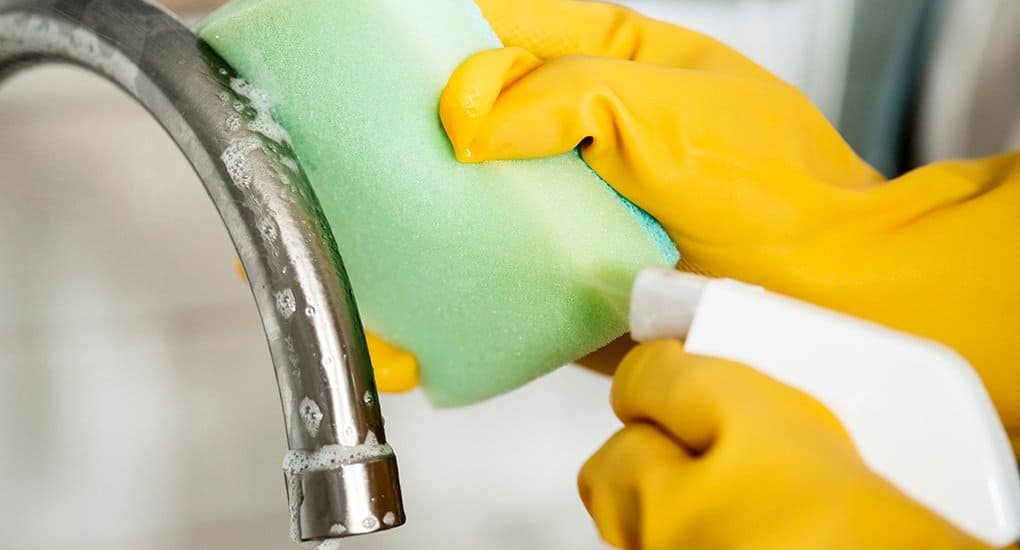
Beyond routine wiping, here’s how to tackle some common issues:
- Stubborn Water Spots & Mineral Buildup (Especially in Hard Water Areas)
- Use a 50/50 mix of white vinegar and water.
- Apply with a soft cloth and let sit for 15–20 minutes max (especially on non-PVD finishes).
- Rinse thoroughly with plain water and dry completely.
- Always test on a hidden area first, especially on bronze or darker finishes, as vinegar may affect the patina.
- Fingerprints & Smudges
- Microfiber cloth works well for general cleaning.
- For extra shine on chrome or polished stainless steel, use a small amount of ammonia-free glass cleaner, followed by a dry buff.
- Brushed and matte finishes hide fingerprints better, but still benefit from gentle cleaning.
- Light Scratches (Only for Brushed Finishes)
- Use a very fine abrasive pad (like Scotch-Brite).
- Gently buff in the direction of the brush lines.
- Use minimal pressure to avoid further damage.
- Do NOT use this method on:
- Polished finishes
- PVD
- Electroplated finishes
- Powder-coated finishes
→ These surfaces can be irreversibly damaged. For deep scratches, professional refinishing may be required.
Installation, Compatibility & Design Integration: Making Your Faucet Fit
Choosing the finish is just the start! You also need to consider how your new faucet will fit into your existing setup and overall home design.
Installation Considerations:
- Hole Configuration: Check your sink or countertop. Faucets come in various configurations:
- Single-hole: The most common for modern designs, often comes with an optional escutcheon plate (deck plate) to cover extra holes from a previous faucet.
- Centerset: Designed for sinks with three holes, typically 4 inches apart.
- Widespread: Also for three holes, but the handles and spout are separate and more widely spaced (usually 8 inches apart).
- Wall-Mount: For sinks that don’t have faucet holes, or for a very minimalist look.
- Deck Thickness: For thicker countertops like granite or quartz, make sure the faucet’s shank is long enough. Most standard faucets fit common setups, but thicker decks may need an extension kit.
- Water Supply Lines: Check the type and length of your current supply lines. Most faucets include standard connections, but you may need adapters or longer lines depending on your plumbing.
Compatibility with Sink Materials:
Your faucet’s finish should complement your sink material, not just your countertops.
- Stainless Steel Sinks: Most finishes pair well here. Chrome, brushed nickel, and stainless create a sleek look, while black, gold, or bronze add contrast.
- Granite Composite/Quartz Sinks: These earthy-toned sinks (black, gray, cream) look great with black, bronze, or brushed gold. Stainless or chrome offer a clean, modern touch.
- Porcelain/Fireclay Sinks: Classic white works with almost anything—chrome and brushed nickel are timeless, gold adds warmth, and matte black delivers bold contrast.
Integrating Your Faucet into Your Design Aesthetic:
Beyond just “modern,” think about the nuances of your home’s style.
- Farmhouse/Rustic: Bronze (especially oil-rubbed) and matte black work well. Choose classic shapes and pair with distressed wood, subway tile, and open shelving.
- Industrial/Urban Loft: Gunmetal, matte black, and stainless steel suit bold, simple lines. Think exposed brick, concrete, and minimal fixtures.
- Mid-Century Modern: Brushed gold and polished chrome complement clean lines and warm woods. Look for sculptural, geometric faucets.
- Traditional/Transitional: Brushed nickel, chrome, or bronze are great picks. Go for curved lines, ornate touches, or two-handle designs.
- Minimalist/Scandinavian: Matte black, stainless steel, and chrome fit sleek, clean styles. Stick to simple forms and monochrome tones.
- Eclectic/Bohemian: Mix it up! Rose gold or brushed gold can stand out. Thoughtfully combine metals for a creative, cohesive look.
The Environmental and Health Impact of Your Faucet Choice
It’s a smart move to consider the broader impact of your faucet, not just its looks.
- Lead Content: Trusted faucet brands follow strict lead-free standards (like NSF/ANSI 61 and the U.S. Safe Drinking Water Act»). Most modern faucets use low-lead brass. Solid stainless steel faucets are naturally lead-free, offering added peace of mind. Always check for certifications.
- Manufacturing Processes:
- PVD: More eco-friendly than electroplating—less waste, fewer chemicals, and often a closed-loop system.
- Electroplating: Can produce hazardous waste and use more energy, but many facilities now follow improved environmental practices.
- Powder Coating: Emits virtually no VOCs and allows overspray to be recycled, making it a greener option than liquid paint.
- Recyclability: Stainless steel and brass are both highly recyclable. Choosing durable faucets helps reduce waste and supports sustainability.
Making Your Decision: Which Finish is Right for You?
Now that you have the facts, how do you decide? It comes down to your style, budget, and how much maintenance you’re okay with.
- On a budget and want a classic look? Chrome is timeless and affordable—just expect to wipe it often.
- Prefer durability and low maintenance? Stainless steel, especially spot-resistant versions, is a great all-around choice.
- Drawn to a modern aesthetic? Matte black and gunmetal look sleek, but they may show water spots—choose PVD coating to help resist scratches.
- Craving a luxe touch? Brushed or rose gold brings warmth and elegance—PVD-coated versions last longer.
- Going for a rustic or traditional vibe? Bronze (like oil-rubbed) adds character and depth.
Ultimately, pick the finish you’ll love seeing every day and that fits your lifestyle. Don’t hesitate to try samples at home—and remember, investing in a PVD finish can pay off in less cleaning and longer life.


